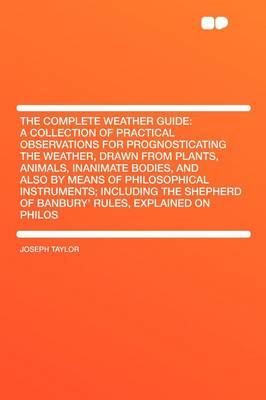Cambridge Library Collection - Earth Science
1 total work
Early nineteenth-century farmers often sowed their crops on an arbitrarily chosen day every year. Impatient with this practice, naturalist Joseph Taylor (c.1761-1844) presents an alternative method in this work, which first appeared in 1812. He argues that by studying the atmosphere, the behaviour of animals and the condition of local flora, a farmer can not only determine the optimal time for sowing, but also forecast the weather. Including the Shepherd of Banbury's famous rules for judging changes in the weather, alongside remarks on the quality of this wisdom, Taylor's book also draws on a wealth of wider countryside knowledge. He observes, for example, that the flowering of primroses and lettuce occurs at such precise times as to be useful for botanical clocks, while the proximity of bees to their hives and the agitation of dogs suggest oncoming weather conditions.
